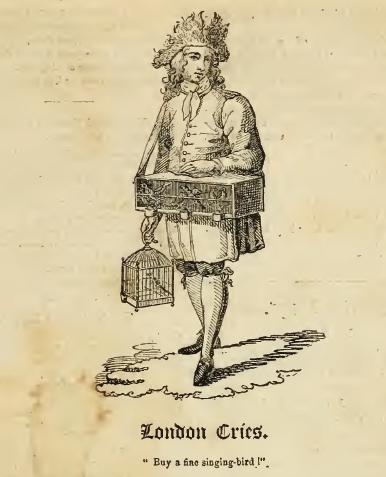Lost Sounds #2: London Street Cries, c. 1700 May 28, 2016
Author: Beach Combing | in : Modern , trackback
Beach offers the second in his series of lost sounds: the noises that were familiar to our ancestors but that have now for ever vanished and that we struggle to reconstruct. Last time, the Lancashire clog charge, this time the criers of early eighteenth-century London. The idea of London street criers, perhaps particularly from Victorian times, has survived: think of the saccharine, Who Will Buy My Sweet Red Roses in Oliver. (Mayhew would probably be worth quarrying for the 1800s).
However, for now, transport yourself back to London, c. 1700 and imagine the cacophony of cockney as men women and children sell their dubious wares. The following are mostly taken from a series of contemporary engravings by Lauron (obit 1705): one at the head of this post. Some are now utterly foreign to us and so explanations follow on in square brackets.
Who’s for a mutton pie, or a Christmas pie?
Scotch or Russia Cloth.
Remember the poor prisoners! [Prisoners commissioned men to go around and get money for their victuals]
Buy a fine singing bird!
Pretty maids, pretty pins, pretty women!
Old shoes for some brooms!
Buy my Dutch biskets?
Old satin, old taffety, or velvet!
Buy any wax or wafers?
My name and your name, your father’s name and mother’s name! [Fascinating, a man carries around type letters and prints your name on a piece of paper]
Long thread laces, long and strong!
London’s Gazette here!
Lilly white vinegar, threepence a quart!
Japan, your shoes your honour! [The OED has ‘Japan a varnish of exceptional hardness that originally came from Japan’]
Fritters, piping hot fritters!
Four pairs for a shilling, Holland socks!
Buy my fine Singing Glasses! [young boy sells glass tubes that make glorious sounds, an up market penny whistle?]
Buy a new Almanac?
As noted above these were based on Lauron’s engravings, and some appeared in Hone’s Table Book 432-436, in 1828. Movingly Hone, the writer, reports that most had vanished by his time: some seem to have been almost as alien to him as they are to us. For them to work you have to imagine them overlapping: Beach tried this in the bath.
Other lost sounds: drbeachcombing AT yahoo DOT com


